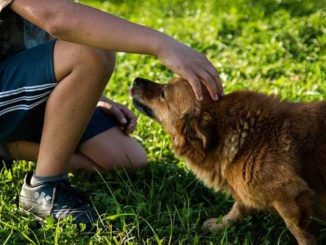Introduction
False pregnancy also known as phantom pregnancy, pseudo pregnancy, pseudocyesis characterized by behavioral change and development of mammary gland development which we be suggestive that the animal is near-full term pregnancy or actually nursing, when in-fact they are not.
False pregnancy is very common in bitches and can be considered a normal variation of the reproductive cycle, but it is uncommon in the cat. Affected bitches often have signs that recur after each estrus cycle. These signs become progressively more intense with each successive cycle in many individuals.
Etiology
It is mainly caused by high plasma concentration of prolactin at the end of the luteal phase, as progesterone level decreasing, unlike many domestic species (e.g., horse, cattle) spontaneous lysis of the corpus luteum does not occur in case of dog and cat resulting in a physiological ‘presumption’ that once ovulation has occurred a pregnancy will ensure. As cat is a non-spontaneous ovulator so false pregnancies are rare in this species and when they do occur, they usually follow unsuccessful mating.
Clinical signs of false pregnancy include:
- Mammary gland enlargement
- Lactation
- Licking the glands or self-nursing
- Nesting
- Adoption of toys or objects
- Anorexia
Make sure to always differentiate false pregnancies from a real pregnancy, impending parturition, pyometra and mastitis.
Treatment
Before doing any treatment always make sure that animal is not pregnant by proper diagnosis, many a times treatment is not necessary, as spontaneous resolution will occur usually within 14 days.
Treatment through management
- Nesting behavior should be discouraged.
- Exercise should be increased.
- Fluid intake should be increased as dehydration could precipitate subclinical disease especially in older animals.
- Covering the mammary glands to avoid self-nursing.
Drug therapy is used when lactation is severe or physiological changes leading to distress to animal.
- Tablet Cabergoline at the dose rate of 5 microgram/kg body weight twice a day for 5 days
- Anti emetics can be given in condition of vomiting (tab Stemetil)
- We can also give supportive treatment depending on condition of animal like multivitamins and mineral supplements.
If the owner is not willing to have pups in future than spaying remains the most effective method as a permanent cure to pseudo-pregnancy.
| The content of the articles is accurate and true to the best of the author’s knowledge. It is not meant to substitute for diagnosis, prognosis, treatment, prescription, or formal and individualized advice from a veterinary medical professional. Animals exhibiting signs and symptoms of distress should be seen by a veterinarian immediately. |






Be the first to comment